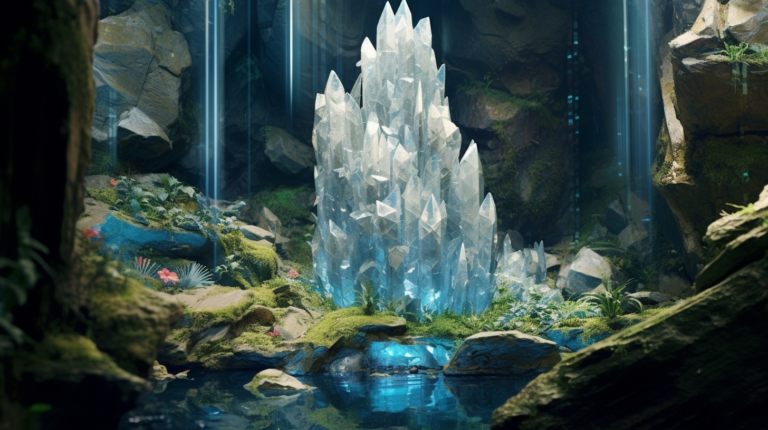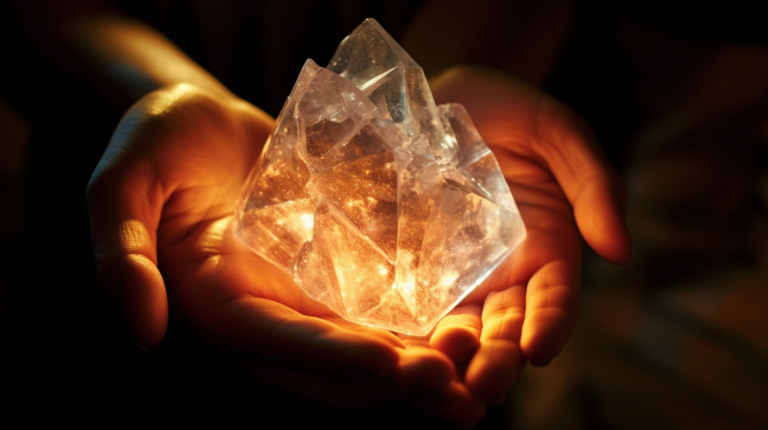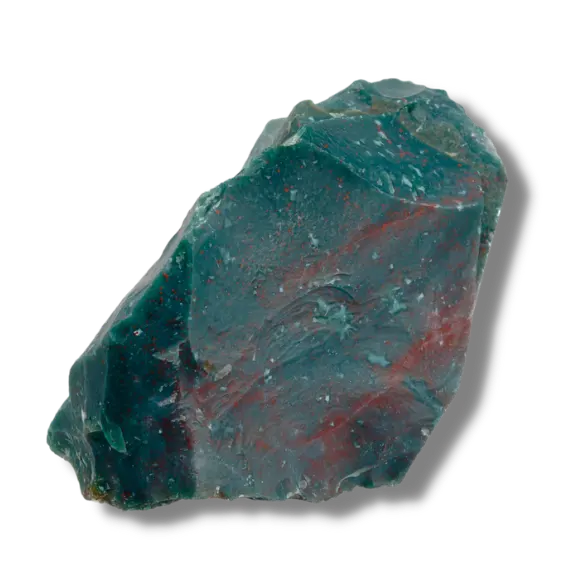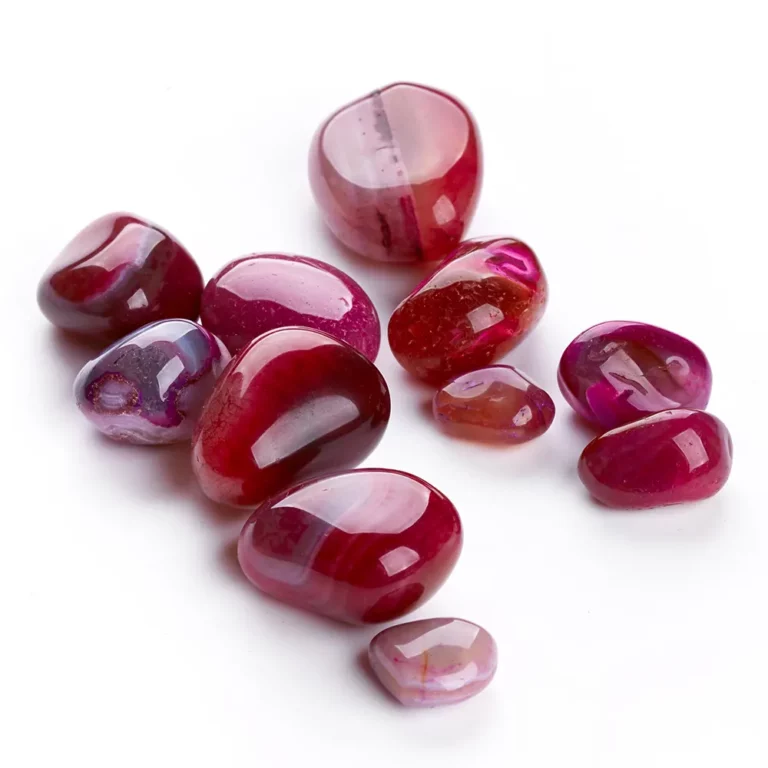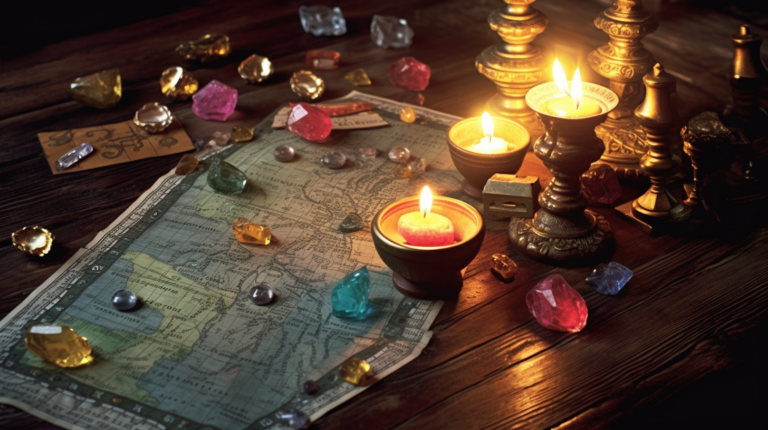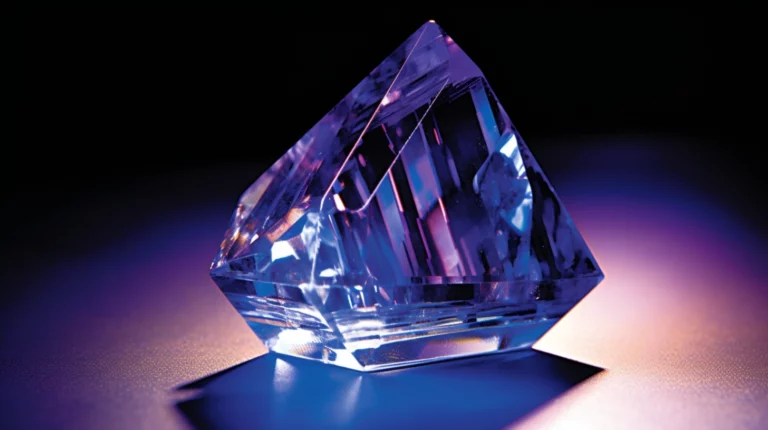Best Crystals for Depression: A Comprehensive Guide to Natural Healing
In this part of our comprehensive guide, we pave the way into understanding the intricate world of crystal healing, specifically focusing on how these natural gemstones can help mitigate the symptoms of depression.
In This Article
Understanding Depression: A Brief Overview

Depression is a common but serious mood disorder that affects how individuals feel, think, and handle daily activities. It extends beyond just feeling ‘down’ and often involves persistent feelings of sadness, hopelessness, and a loss of interest in previously enjoyed activities.
The Role of Crystals in Mental Health and Well-being
Historically, crystals have been used in various cultures for their perceived healing and protective properties. In modern times, these natural gemstones are often utilized as a part of holistic health practices, offering a natural, non-invasive approach to mental health and well-being. The inherent uniqueness of each crystal, from its distinct structure to its vibrant color, is believed to resonate with our body’s energy centers, helping to restore balance and promote healing.
Holistic Healing for Depression: Why Consider Crystals?
Depression, like many other mental health issues, can often be complex and multifaceted. While conventional therapy and medication play a vital role in managing this condition, incorporating holistic healing modalities, like crystal therapy, can provide complementary support.
Crystals offer a tangible, physical aspect to the often intangible nature of mental health. They serve as focal points for meditation, reminders of intention, and physical symbols of healing. Whether you’re drawn to the intricate patterns of Smoky Quartz or the soothing tranquility of Lepidolite, the crystal chosen has the potential to influence your mindset and emotional state positively.
This guide serves as an introduction to these powerful tools, helping you understand their potential benefits, the science behind their use, and how to implement them into your daily routine for optimal wellness.
The Science Behind Crystal Therapy for Depression
Venturing into the realm of crystal therapy, it’s crucial to understand the science that underpins this holistic approach to mental health. Although the empirical evidence for crystal healing is still in its nascent stages, several theories lend credibility to its effectiveness.
The Theory of Vibrational Healing
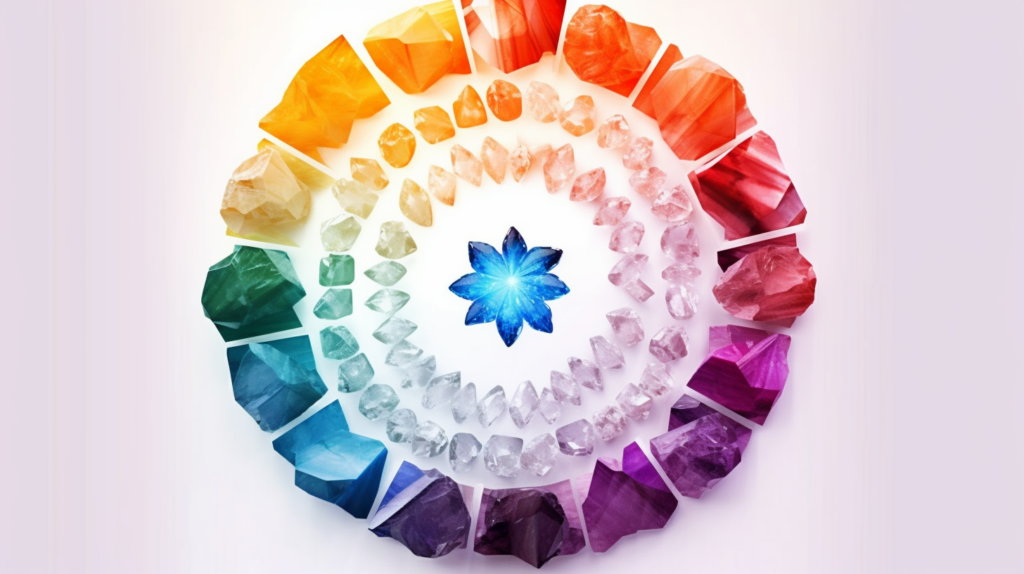
The principle of vibrational healing posits that everything in the universe, including our bodies and crystals, is made of energy and has a unique vibrational frequency. When our body’s energy is disturbed due to stress, trauma, or illness, vibrational healing techniques such as crystal therapy can help restore balance. Each type of crystal holds a different vibration that can interact and influence our body’s energy fields, helping us to realign and balance our energies.
The Link Between Crystals and the Human Energy Field
Human beings have an intricate energy system composed of auras, meridians, and chakras. Many holistic practitioners believe that crystals can interact with this energy system, particularly with the chakras or energy centers, promoting the free flow of energy and removing blockages. For instance, Rose Quartz, with its gentle pink hue and loving energies, is often associated with the Heart Chakra, helping to open up this center to give and receive love.
The Scientific Basis of Crystal Healing: What Does Research Say?
While the scientific community is yet to embrace crystal therapy fully, some studies suggest a possible connection. A few research papers have observed that human cells and quartz crystals share a common characteristic – they can both oscillate or vibrate at certain frequencies, implying that crystals might indeed impact human energy fields. However, it’s important to remember that more research is needed to definitively establish the effectiveness of crystal healing.
In the end, the science of crystal therapy leans heavily into the realm of quantum physics and metaphysics. It’s a journey of exploration, openness, and personal experience. As we continue to explore and understand this field, we can unlock new potentials in holistic health and wellness.
Case Studies and Personal Experiences
In the world of crystal therapy, personal testimonials often provide the most powerful insights into their effectiveness in dealing with depression. These real-life experiences, while subjective, play a critical role in demonstrating the potential of crystal healing.
Real-life Stories: How Crystals Have Helped Individuals Battle Depression
Numerous accounts exist of individuals who have embraced the power of crystals to assist in their journey through depression. From the calming effect of Amethyst during bouts of anxiety to the confidence-boosting energies of Carnelian that help overcome self-doubt, these stories inspire and validate the potential for crystals to facilitate healing.
One poignant example involves a woman who, suffering from severe anxiety and depression, turned to Lepidolite, often referred to as the “Peace Stone.” She reported a noticeable shift in her daily life, stating that the stone’s calming energies helped her find moments of tranquility amidst her tumultuous mental state.
The Impact of Crystal Therapy: Before and After Experiences
The impact of crystal therapy frequently manifests as subtle changes over time. Before incorporating crystals into their lives, individuals might feel stuck, overwhelmed, or disconnected. As they begin to use these healing stones, they often report feelings of increased calmness, clarity, and positivity.
For example, a man battling depression reported feeling an enhanced sense of strength and grounding after integrating Black Tourmaline, the “Protection Stone,” into his daily routine. He reported a decrease in negative thought patterns and an increased ability to face challenges head-on.
While these experiences are unique and personal, they demonstrate the potential for crystals to serve as effective tools in the battle against depression. It’s important, however, to treat these stories as supplementary to scientific research and not as a substitute for professional medical advice. Even though the power of stones and crystals can provide remarkable support, they should be used in conjunction with, not in replacement of, traditional treatments for depression.
Best Crystals and Stones for Depression: Exploring Their Healing Powers
Crystals, with their unique vibrational energies and healing properties, can provide support in overcoming depression. Below are some of the most recommended crystals for this purpose along with their associated healing powers.
Smoky Quartz: The Stone of Emotional Stability

Smoky Quartz is known for its grounding and stabilizing properties. It can help clear out negative emotions and thoughts, making space for positivity and calmness. This stone can be particularly helpful in times of heightened stress or anxiety.
Lepidolite: The Crystal of Positivity and Self-care
Lepidolite, often called the “Peace Stone,” carries the power to soothe and calm. It’s believed to aid in reducing feelings of anxiety and promoting a positive outlook, making it an ideal companion in the journey to overcome depression.
Citrine: The Gemstone of Optimism and New Perspectives
Citrine is often referred to as the ‘light maker’ due to its bright, sunny color and its associated uplifting and positive energy. This gemstone can help to clear the mind, encourage optimism, and foster an overall sense of well-being.
Carnelian: The Stone for Boosting Energy and Confidence
Carnelian, with its vibrant orange color, is known for its energizing properties. This stone can promote courage, motivation, and positivity, helping to dispel lethargic feelings often associated with depression.
Sunstone: The Crystal for Battling Seasonal Affective Disorder
Known for its radiant energy, Sunstone is believed to carry the power of the sun. This crystal can help to lift dark moods and is especially useful for those suffering from Seasonal Affective Disorder.
Tiger’s Eye: The Stone for Improving Self-Image and Belief
Tiger’s Eye is a stone of courage and motivation. Its energy can help to improve self-image and promote self-belief, making it a powerful ally for individuals battling depression.
Black Tourmaline and Black Obsidian: The Crystals for Stability and Protection
Both Black Tourmaline and Black Obsidian are known for their grounding and protective energies. They can play a significant role in shielding from negative energies and providing a sense of stability and safety.
Blue Lace Agate: The Stone for Reducing Mood Swings and Promoting Communication
Known for its soothing and calming properties, Blue Lace Agate can help to balance mood swings and promote clear, calming communication. This stone can aid in expressing feelings and ideas, an essential aspect of managing depression.
Rose Quartz: The Crystal for Promoting Self-Love and Healing Heartbreak
Rose Quartz is often associated with love and compassion. Particularly, it aids in promoting self-love, a powerful antidote to depression. This stone is also known for its ability to help heal emotional wounds and heartbreak.
Clear Quartz: The Stone for Mental Clarity and Relief from Negative Thoughts
Often referred to as the “Master Healer,” Clear Quartz is known for its ability to bring mental clarity and dissipate negativity. This crystal can aid in clearing the mind of negative thoughts, promoting a sense of peace and clarity.
Amethyst: The High Vibrational Crystal for Spiritual Connection
Amethyst is a high vibrational stone known for its calming and spiritual connection properties. This crystal can aid in balancing mood, fostering tranquility, and enhancing meditation, making it a valuable tool for those working towards overcoming depression
How to Choose the Right Crystals for Depression Based on Individual Needs
While there are many crystals touted for their purported benefits in reducing depression, it’s essential to remember that healing is a deeply personal process. What works best for one person may not necessarily work as well for another. Here are a few considerations to guide you in choosing the right crystals for your needs.
Understanding Your Emotional Needs: The Key to Choosing the Right Stone
Each individual’s experience with depression is unique, with varying symptoms and triggers. When choosing a healing crystal, consider your specific emotional needs. For instance, if negative thought patterns are a prominent feature of your depression, Clear Quartz, known for its ability to clear negativity, could be beneficial for you. If feelings of low self-worth are a struggle, Carnelian, a stone of confidence, may be a suitable choice.
Customizing Your Crystal Therapy: Combining Stones for Maximum Effect
Using a single crystal can be effective. However, combining multiple stones can create a more potent healing energy. For example, using Rose Quartz in combination with Amethyst might offer both self-love and calming energies to your healing process. It’s key to experiment and find what combination of energies best serve your emotional needs.
Remember, choosing the right crystal(s) is a deeply personal process. You might be drawn to a specific stone due to its color, texture, or inherent energy. Trust your instincts and allow yourself to be guided by the stones that resonate with you. After all, healing is not a one-size-fits-all journey but a path that is as unique as you are.
Using Crystals to Clear the Mind and Boost Mood: Practical Tips
Having chosen your crystals, the next step is to incorporate them into your daily routine. This integration can be done in multiple ways, and we’ve compiled a few practical tips to get you started.
How to Use Healing Stones for Depression: A Step-by-Step Guide

One common method of using healing stones involves carrying them with you throughout your day. This can be in your pocket, purse, or even as a piece of jewelry. Having the stone close allows its energy to interact with yours continually.
Another common practice is to meditate with your chosen crystal. Start by finding a quiet, comfortable place to sit or lie down. Hold the crystal in your hand or place it on a chakra point related to your emotional needs, then close your eyes and focus on your breath. As you meditate, imagine the crystal’s energy flowing into your body, balancing your energy, and promoting healing.
Placing crystals in your living or workspace can also serve to create a positive, healing environment. Each time you see your crystal, it may serve as a reminder of your healing intention and help you maintain a positive mindset.
Integrating Crystal Healing with Meditation and Mindfulness for Better Results
The synergistic effects of crystal healing and meditation can amplify the benefits of both practices. When meditating with your crystals, focus on the stone’s specific healing properties and visualise them permeating every part of your being. Mindfulness, too, plays a pivotal role in crystal healing. Being present and aware of the crystal’s energy can intensify its therapeutic effects.
Keeping Your Crystals Potent: Maintenance and Recharging
Just like any tool, crystals also need to be taken care of to keep their healing properties potent. Regularly cleansing your crystals is key to maintaining their energy. This can be done in several ways, including using running water, smudging with sage, or bathing them in moonlight.
Additionally, recharging your crystals is equally important. Crystals can be charged under the sunlight or the moonlight, buried in the earth, or placed on a large crystal cluster. This process refreshes their energy, preparing them for further use.
Implementing these tips can help you make the most of your crystals and their healing energies. By integrating the stones into your daily routine, being mindful of their presence, and taking proper care of them, you can harness their full potential to support your journey towards overcoming depression.
Potential Risks and Limitations of Using Crystals as a Treatment for Depression
While crystals offer a holistic and natural approach to managing depression, it’s important to be aware of their potential limitations and risks. Understanding these nuances allows for a safe and effective application of crystal therapy.
Crystal Therapy: A Complementary Approach, Not a Cure
Crystal therapy can certainly provide support and aid in managing the symptoms of depression. However, they should not be seen as a cure-all. This holistic approach works best when combined with other treatments such as medication, psychotherapy, and lifestyle modifications.
The Importance of Professional Help for Depression
Depression is a serious medical condition that requires professional help. While crystals can offer support, they should not replace seeking help from a licensed healthcare professional. If you’re experiencing symptoms of depression, it’s crucial to reach out to a psychologist, psychiatrist, or a trusted healthcare provider.
Additionally, while the use of crystals is generally considered safe, it’s always a good idea to discuss any complementary therapies you’re considering with your healthcare provider. They can help you understand how these might fit into your overall treatment plan and advise on any potential interactions or contraindications.
In conclusion, crystal therapy, while a potent tool, is part of a broader wellness toolkit. It is not a substitute for professional help. Effective treatment for depression often requires a multi-faceted approach that includes professional medical treatment, self-care, lifestyle modifications, and potentially, the supportive energy of crystals.
The Integration of Crystal Healing with Other Therapeutic Approaches
Just as a jigsaw puzzle is incomplete with a piece missing, treating depression often requires an intricate blend of multiple therapeutic approaches. Crystal therapy, when integrated with other therapies, can create a holistic treatment plan that addresses various aspects of depression.
Combining Crystal Therapy with Traditional Therapies
Crystal therapy can be effectively combined with traditional therapies such as Cognitive Behavioral Therapy (CBT) or medication. For instance, while working through cognitive restructuring in CBT, having a clear quartz (known for promoting mental clarity) close by can help individuals clarify their thoughts. Similarly, carrying soothing stones like Lepidolite or Blue Lace Agate can provide comfort during the emotional ups and downs that can occur while adjusting to new medications.
The Role of Lifestyle Changes in Enhancing the Effects of Crystal Healing
Lifestyle modifications such as regular physical exercise, healthy nutrition, adequate sleep, and stress management techniques like mindfulness and meditation play a critical role in managing depression. When these practices are reinforced with the energy from healing stones, individuals may experience amplified benefits. For example, meditating with a high vibrational crystal like Amethyst can deepen the meditation experience, further helping to reduce stress and promote mental well-being.
In essence, integrating crystal healing with other therapeutic approaches creates a comprehensive, holistic treatment plan that addresses not only the symptoms but also the underlying causes of depression. By tapping into the synergy of multiple therapies, individuals can enhance their ability to manage depression and improve their overall mental health.
As always, any changes or additions to your treatment plan should be discussed with your healthcare provider to ensure it aligns with your individual needs and medical circumstances.
What is the theory behind using crystals for treating depression?
The theory of vibrational healing suggests that crystals, with their unique vibrational frequencies, can influence the human energy field. This interaction can help balance the emotional state and alleviate symptoms of depression.
What are some of the best crystals recommended for depression?
Some recommended crystals for depression include Smoky Quartz, Lepidolite, Citrine, Carnelian, Sunstone, Tiger’s Eye, Black Tourmaline, Black Obsidian, Blue Lace Agate, Rose Quartz, Clear Quartz, and Amethyst. Each has unique healing powers, such as promoting emotional stability, positivity, self-care, optimism, self-love, and mental clarity.
How can I choose the right crystal for my depression?
Choosing the right crystal for your depression involves understanding your emotional needs. You may also consider customizing your crystal therapy by combining different stones to maximize their effects.
How can I use crystals to treat my depression?
Crystals can be used in conjunction with meditation and mindfulness practices. Also, maintaining and recharging your crystals is essential to keeping their healing powers potent. However, it is important to remember that crystal therapy should be used as a complementary approach, not a cure, and professional help is crucial when dealing with depression.
Can crystal therapy be combined with other therapeutic approaches?
Yes, crystal healing can be integrated with traditional therapies and lifestyle changes to enhance its effects. Remember, it is not a standalone treatment but can be a powerful tool in a comprehensive approach to managing depression.


